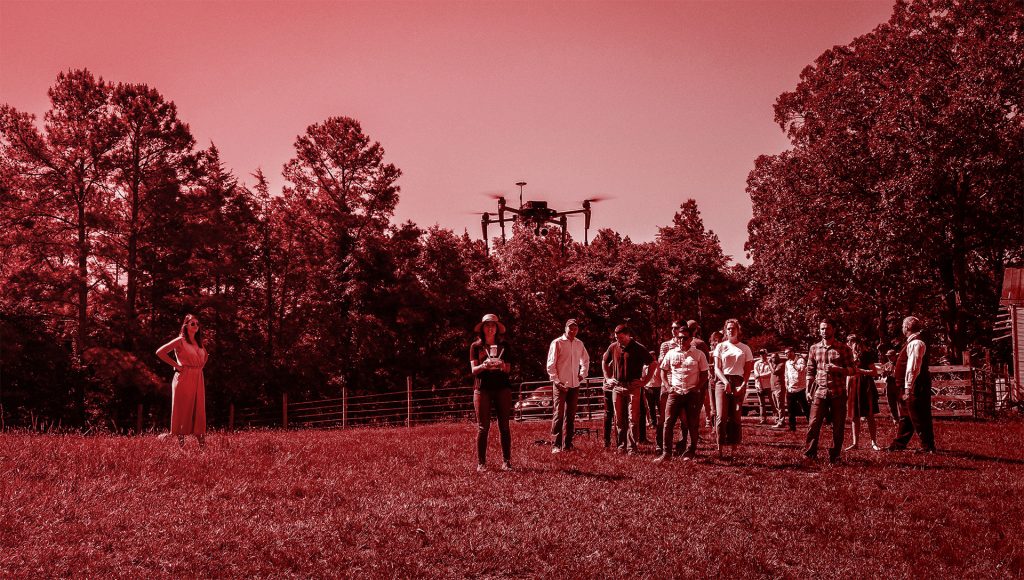In our Drone Service Provider Business Guide, you’ll learn how to earn an income flying drones. Read it now.
In this post, we’ll introduce the certifications, insurance, and safety practices you’ll need to operate a drone business.
Protect Yourself and Your Drone Business
As a drone service provider, you’ll want to protect yourself and your business from operational risks by obtaining proper insurance and certifications for your commercial activities. This section covers everything you’ll need to mitigate risk and legally fly your drones.
Get Certified for Commercial Drone Flight
Beginning in June 2016, the Federal Aviation Administration (FAA) unveiled the Part 107 rule, which allowed aspiring pilots to comply with the following steps to legally operate a drone for commercial purposes.
1. Obtain a Remote Pilot Certificate
To receive your certificate you will need to be at least 16 years old and pass an initial aeronautical knowledge test. You’ll need to obtain a passing score of 70% or higher. After you receive your certificate, you must renew it every two years by passing a recurrent knowledge test. You can learn more about the process and the test here. If you need help with test prep, the Drone Pilot Ground School offers an online course to help you prepare for the Part 107 knowledge test.
Keep in mind that every drone operator your business employs will need to obtain their own certificate.
2. Complete the FAA Form 8710-13
After you pass the test, you must complete form 8710-13 to apply for your certificate using the FAA’s Integrated Airman Certificate and/or Rating Application (IACRA) system.
3. Register your Drone
It will cost you $5 to register each drone you plan to operate for your business. Each registration is valid for three years. You can register your drone here.

Get Insured to Fly Drones
There are two primary types of coverage you need to protect your business.
1. Liability Insurance
Liability is the base policy for aviation insurance. It protects your business from Property Damage and Bodily Injury claims that may occur from day-to-day operations. You need to have this insurance before you can purchase any additional coverage. Liability limits usually start at $500,000 and generally can be increased as needed for your business and clients.
2. Hull Insurance
After getting liability insurance, you want to get hull insurance to protect your drones and minimize cost from any physical damage your drones encounter. The amount of coverage you receive is decided on an “Agreed Value” basis, meaning that the amount is based on the agreed upon value of your drone. With this in mind, it is important that you get an accurate appraisal.
Stay Safe Flying Drones (and Compliant to Regulations)
As a drone service provider, it is your responsibility to comply with the latest safety regulations. This protects your safety and the safety of the people around your flight path, not to mention the reputation of your business.
The FAA’s Part 107 ruling has explicit guidelines on when and where drones can be safely operated. It is important to review these guidelines to educate yourself, and your employees, on best practices. A fact sheet of the Part 107 rules can be found here.
In addition to the FAA’s regulations, under the OSHA Act business owners have a duty to provide all workers with a safe and healthful workplace. The Occupational Safety and Health Administration (OSHA) offers a free and confidential consulting service for small businesses to assist with identifying potential hazards at their workplace and improve existing safety programs.
Create a Safety Manual
The first step in developing an OSHA compliant and safe workplace environment is to develop a safety manual. Here are a few safety items to include in your manual:
Standard Operating Procedure (SOP)
A standard operating procedure is a set of written directions that describes how to safely perform work involving hazardous materials, equipment or operations. As a drone operator, your SOP should include:
- A Code of Conduct
- A Team Safety Policy
- Pilot and Staff Workflows—actions operators should complete prior, during, and post-flight operations.
- Normal and Emergency Communication Procedures
Safety Management System (SMS)
Following the SOP, you will need to establish a safety management system. As defined by the FAA, a SMS “is the formal, top-down, organization-wide approach to managing safety risk and assuring the effectiveness of safety risk controls.” The standardized procedures, practices, and policies included in your company’s SMS will vary and should be based on the safety standards required in the industries you serve.
Personal Protection Equipment (PPE)
PPE is worn to minimize exposure to a variety of onsite safety hazards. At a minimum you should wear a hard hat, safety vest, long pants and steel-toe boots at all times to protect yourself from potential safety threats when operating a drone.

Incident Response Plan
Incident response plans document the organized approach a company uses to address and manage safety incidents. This plan should cover how your company would:
- Document the steps leading up to and following a safety incident
- Conduct a thorough investigation
- Identify and implement corrective actions
Injury Prevention Plan
The purpose of creating an Injury Prevention Plan is to establish and implement effective injury prevention and education strategies to avoid workplace hazards.
Job Safety Analysis (JSA)
A JSA is used to reinforce internal safety protocol by describing job tasks in a step-by-step manner, identifying the associated hazards, and outlining the proper hazard controls to minimize workplace risks when performing the task. At PrecisionHawk, we have our operators review and complete our JSA prior to each flight.
“If something goes wrong, like a crash, you need to have a plan describing how you address, investigate and implement corrective procedures.” - Matt Tompkins, Director of Flight Operations at PrecisionHawk
Secure a Part 107 Waiver
On a case-by-case basis, the FAA issues waivers to certain Part 107 requirements if you are able to demonstrate that your business can operate safely without harming people or property. As you familiarize yourself with the FAA’s regulations, you should identify any applicable waivers your business may need and apply for them on the FAA’s DroneZone portal by following these application instructions. While processing times vary, on average waiver requests are reviewed within 90 days.
PrecisionHawk now offers Beyond Visual Line of Sight (BVLOS) consulting and training services to enable drone operators to fly commercial missions BVLOS. Over 1,180 companies have applied for the BVLOS waiver, but only 15 (1.2%) companies have been approved to fly BVLOS. For the last three years, PrecisionHawk has conducted BVLOS research on behalf of the FAA’s Pathfinder Program to develop BVLOS operational and safety practices. We are taking our extensive knowledge to help other companies navigate the complexities of the BVLOS waiver process and explore new possibilities for executing inspections, surveys, precision agriculture, emergency response, and more.
Learn more about our BVLOS Drone Operations Consulting Program.

Get Trained
To develop or advance your drone piloting skills, you should consider investing in drone pilot training. PrecisionHawk offers training packages to help individuals become drone pilots and understand how to use mapping and analytics. Our package covers regulation and safety procedures along with how to capture data and create data products. For more information on our training packages visit us here.
Get the Guide to Starting a Drone Business
To learn everything you need to know about starting your own drone business, read our Drone Service Provider Business Guide. Or speak with one of our experts today.